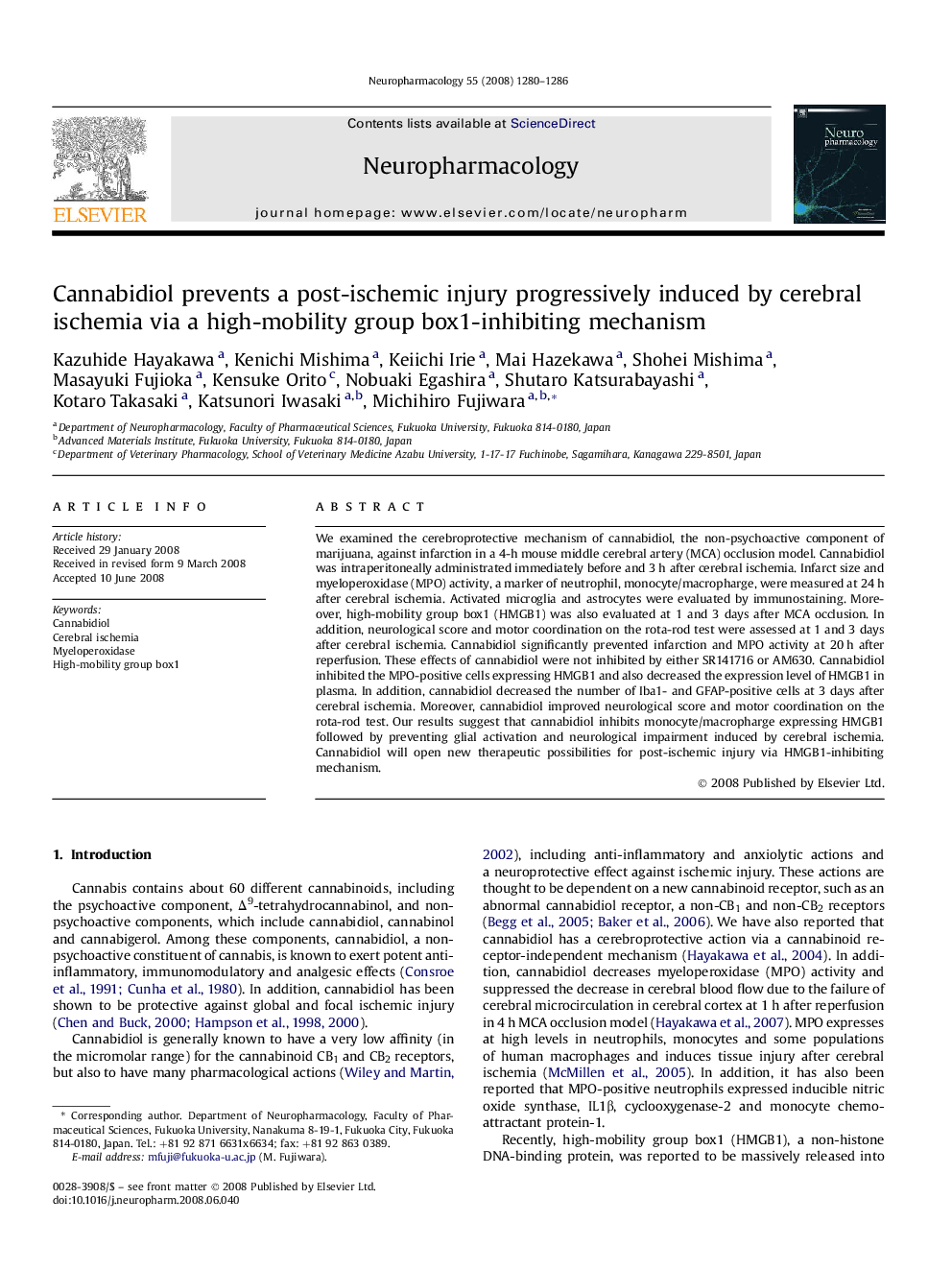| کد مقاله | کد نشریه | سال انتشار | مقاله انگلیسی | نسخه تمام متن |
|---|---|---|---|---|
| 2494453 | 1115566 | 2008 | 7 صفحه PDF | دانلود رایگان |

We examined the cerebroprotective mechanism of cannabidiol, the non-psychoactive component of marijuana, against infarction in a 4-h mouse middle cerebral artery (MCA) occlusion model. Cannabidiol was intraperitoneally administrated immediately before and 3 h after cerebral ischemia. Infarct size and myeloperoxidase (MPO) activity, a marker of neutrophil, monocyte/macropharge, were measured at 24 h after cerebral ischemia. Activated microglia and astrocytes were evaluated by immunostaining. Moreover, high-mobility group box1 (HMGB1) was also evaluated at 1 and 3 days after MCA occlusion. In addition, neurological score and motor coordination on the rota-rod test were assessed at 1 and 3 days after cerebral ischemia. Cannabidiol significantly prevented infarction and MPO activity at 20 h after reperfusion. These effects of cannabidiol were not inhibited by either SR141716 or AM630. Cannabidiol inhibited the MPO-positive cells expressing HMGB1 and also decreased the expression level of HMGB1 in plasma. In addition, cannabidiol decreased the number of Iba1- and GFAP-positive cells at 3 days after cerebral ischemia. Moreover, cannabidiol improved neurological score and motor coordination on the rota-rod test. Our results suggest that cannabidiol inhibits monocyte/macropharge expressing HMGB1 followed by preventing glial activation and neurological impairment induced by cerebral ischemia. Cannabidiol will open new therapeutic possibilities for post-ischemic injury via HMGB1-inhibiting mechanism.
Journal: Neuropharmacology - Volume 55, Issue 8, December 2008, Pages 1280–1286